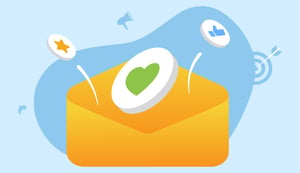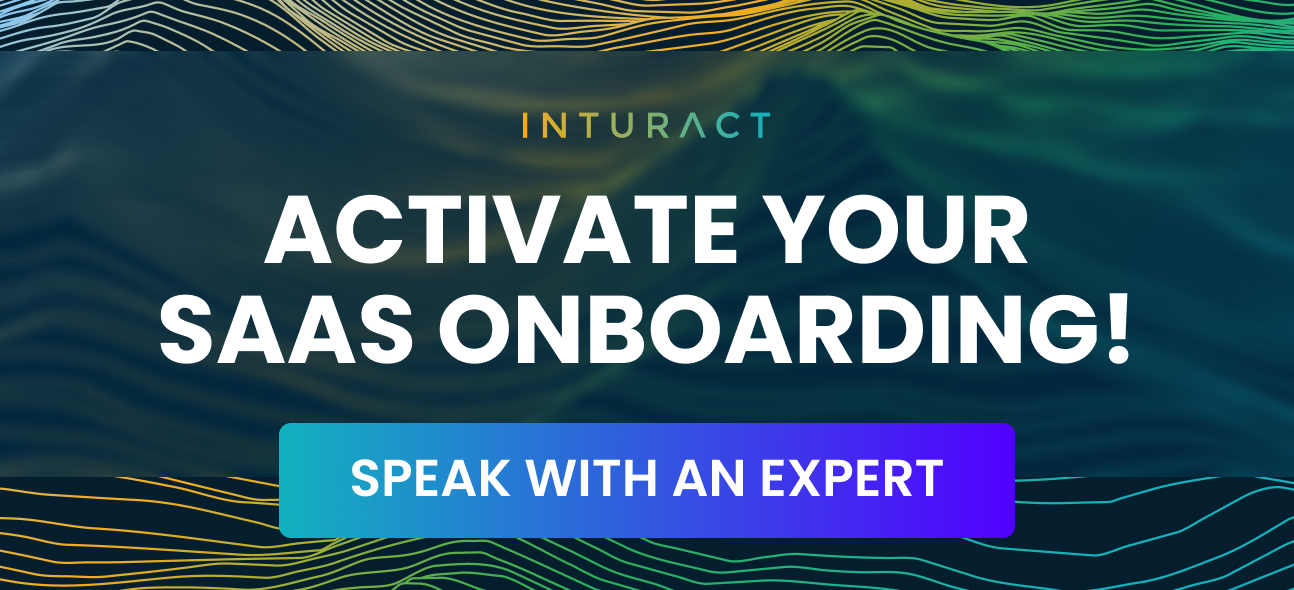When onboarding a new user for any product, one of the primary ways of doing so is with email user onboarding. Your email user onboarding process gives you the opportunity to connect directly with your user and help them understand how your product can be used to help them achieve their goals.
In this post, we’ll explore seven tips to get more conversions with your email user onboarding process. Let’s dive in!
What is Email User Onboarding?
Email onboarding refers to the series of emails that are sent out to new users after they sign up for a service or product. The purpose of these emails is to guide the user through the initial stages of using the product or service, making them feel more comfortable with it, and ultimately converting them into loyal customers.
Why is email onboarding so important?
It’s important because it can make or break your users’ engagement with your product. Not only does it provide a great opportunity to teach your user how best to use your product, but it also can help build trust and loyalty. Equally important is the fact that effective email user onboarding helps to reduce churn rates by encouraging users to stay engaged with your content over time. By providing valuable information in the early stages of the user journey, you’ll be able to keep them interested and invested in what you have to offer.
What are the best tips to get more conversions with email onboarding?
There are several tips for getting more conversions through email user onboarding, but the seven we’ll cover below are:
- Start with a Welcome Email
- Keep it Short and Sweet
- Personalize the Experience
- Use Visuals
- Provide Value
- Call-to-Action (CTA)
- Follow-up
Now that you know the best tips for email user onboarding, let’s break them down further so you can optimize your emails to the fullest!
Tip 1 - Start with a Welcome Email
The welcome email is perhaps the most critical component of your email onboarding process. It sets the stage for how you will engage with your user in the coming days.
In this email you will, as you likely expected, welcome your user to the onboarding process. It’s important for this email to be warm and friendly, with clear instructions on the steps they need to take next.
You also want to thank your new users for signing up or subscribing to your service or product.
Additional things you could include in this initial correspondence are:
- A brief reason or two why you’re so passionate about this product
- Links to resources
- A helpful tip or two to get started
- A survey as to how you can best help the user
- This survey can actually be used to trigger a series of helpful emails later
- An invitation to reply to the email with questions or concerns.
Tip 2 - Keep it Short and Sweet
Your subscribers are busy people, so keep your emails concise and to-the-point. Don't overwhelm users with too much information or long paragraphs.
We get it though. It can be challenging to strike the right balance between providing enough information without overwhelming the reader with too much detail.
But here’s the thing - shorter emails are more likely to be read by recipients. Most people receive dozens or even hundreds of emails every day, so they don't have time to read lengthy messages.
Concise emails make it easier for readers to understand and retain information. By highlighting only the most important points, you can ensure that your message gets across clearly and effectively.
In addition, keeping your emails brief and easy-to-read helps maintain engagement throughout the email onboarding process.
Ideas for condensing content without skimping on quality:
- Create a clear and concise subject line that tells the reader exactly what to expect
- Use bullet points for skimmable reading
- Break up longer paragraphs
- Link out to additional resources - this lets the user decide if they want to invest more time, and ensures you are providing them with everything they could need
Tip 3 - Personalize the Experience
We want to feel like people that matter, not cogs in a wheel. That’s where personalization comes into play. It’s much easier to keep a user hooked and build trust and loyalty if you are treating them like a person, and not a line item.
Ways to personalize emails
Here are just a few ways you can personalize your emails:
- Use their name! This is much better than “Dear client,” or “Dear user.”
- Pro Tip: If you use automated email systems, make sure they work! There’s nothing worse than receiving an email that says “Hey [First name!]” because it negates any good feelings they could have had of personalization
- Provide user based content. For example, if you used a survey to find out your customer’s pain points, your emails to them could cater to how to solve those problems
- Send emails based on the user’s actions. For example, if a customer abandoned their sign up process on your website, you can send them a personalized email to pick up where they left off.
Tip 4 - Use Visuals
A well-crafted email onboarding campaign helps users understand the features and benefits of a product or service, leading to increased usage and loyalty. However, it's not enough to simply send out text-heavy emails with instructions and rules. To truly engage users, visuals must be incorporated into the onboarding process.
Visuals can help convey complex ideas in simple terms.
They allow users to understand what a product does and how it works, without having to read long paragraphs. Visuals also help you make an emotional connection with users by providing them with a more enjoyable experience. More enjoyment increases engagement rates as well.
Types of visuals to include
Here are just three types of visuals to consider including in your email user onboarding process:
- Product Screenshots: One effective way to communicate product features and benefits is through screenshots. These images give users a quick preview of what they can expect when using your product.
- Videos: Video content has become increasingly popular in recent years, and for good reason. Explainer videos are an engaging way to showcase your product's key features while also providing users with step-by-step instructions on how to use it.
- Infographics: For more complex products or services, infographics can be a helpful visual aid in explaining how things work.
Tip 5 - Provide Value
Providing value means offering something valuable, useful, or relevant to your audience that meets their needs or solves a problem for them.
This could be in the form:
- Educational resources
- Exclusive content
- Discounts
- Free trials
- Personalized recommendations based on their preferences, and more
By providing value during the email onboarding process, you demonstrate that you understand your user’s needs and are committed to delivering solutions that improve their lives.
Moreover, providing value sets the tone for future interactions with your brand and establishes trust between you and your subscribers.
Ways to provide value to users
The first way is one we already mentioned earlier - create personalized content that speaks directly to the user's needs and pain points. Use data-driven insights to understand what your users want, and then create tailored messaging that resonates with them. This will help them see the immediate value in your product or service and encourage them to engage further.
Second, provide clear instructions on how to use your product or service so that new users feel confident in navigating it. Make sure all relevant information is easily accessible through links or attachments within the email itself.
Third, offer help. Let your users know that they don’t have to go it alone. This also doesn’t mean you have to hold everyone’s hand, however. Offering help can be done in the form of:
- Surveys that trigger additional helpful emails
- Links to knowledge bases that walk users through how to use the product and/or troubleshoot issues they may have
- Options to open a support ticket for tech related problems
- Youtube links to tutorials for how to use your product
- Case studies that better explain the value of your product
- Success stories that inspire your users.
Tip 6 - Call-to-Action (CTA)
Every email you send should have some form of a CTA within it. When you give a user something to do, they are much more likely to follow through. It’s kind of like what happens when you say a statement versus asking a question. If you say a statement, the conversation ends. But, if you ask a question, the conversation continues.
Think of your CTA as a question that will keep things moving with your user. It prompts a response or action!
Simple CTAs could include:
- Finish signing up
- Watch our tutorial on X
- Set up your profile
- Lock in your savings and buy an annual plan now.
Tip 7 - Follow-up
This is perhaps the most overlooked tip, but neglecting it can cost your business a lot of money! Following up lets the user know you care, and want them to succeed. If they stopped the onboarding process, reach out and ask them why. If they canceled their service, offer them an incentive to come back.
Follow-up emails are essential because they help to reinforce the message that was communicated in previous messages. They also provide an opportunity for businesses to gather feedback from users, which can be used to improve their product or service.
In addition, follow-up emails can help reduce confusion among users who may have missed important information during the initial onboarding process.
Bottom line - if you’re not following up, you’re leaving money on the table.
A Quick Recap and Where to Go From Here
We’ve covered a lot, but here’s a quick recap of our seven tips to get more conversions from your email user onboarding. Again those tips are:
- Start with a Welcome Email
- Keep it Short and Sweet
- Personalize the Experience
- Use Visuals
- Provide Value
- Call-to-Action (CTA)
- Follow-up
It may take some time, but setting up an email onboarding process will be worth it. Want some assistance creating your email series?
Our user onboarding specialists can help you create a better email and user onboarding process that converts. Click here to talk with us today. Let’s get your conversion rates up and your profits soaring!



